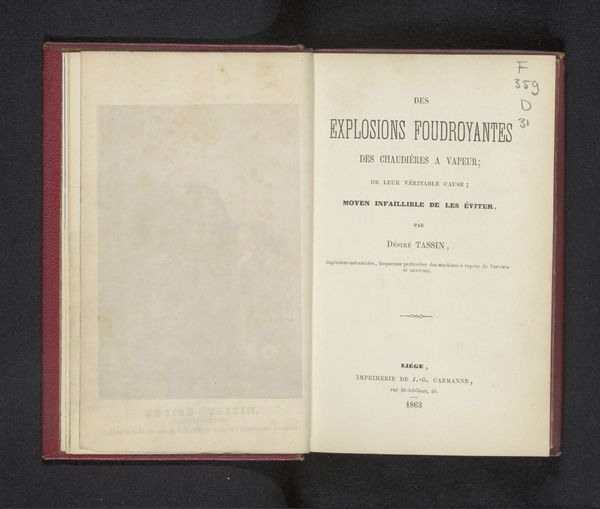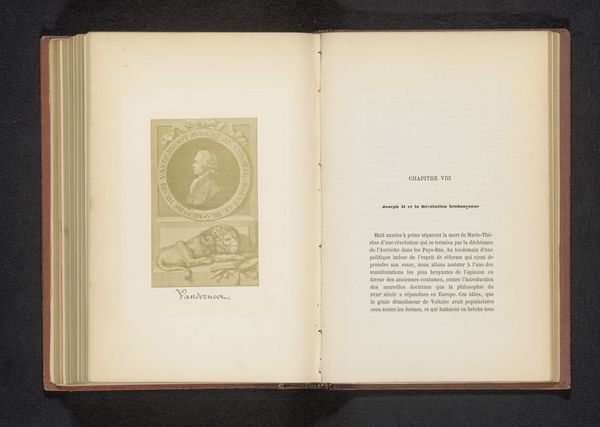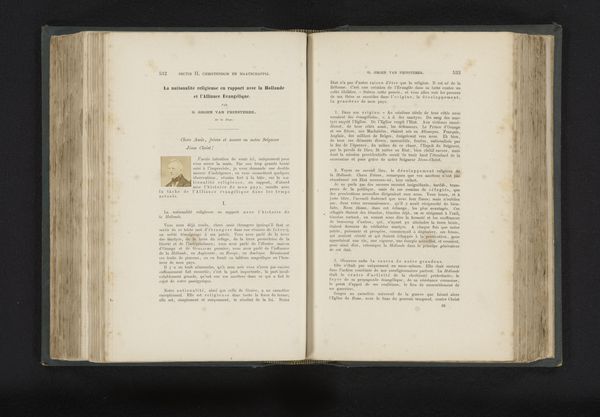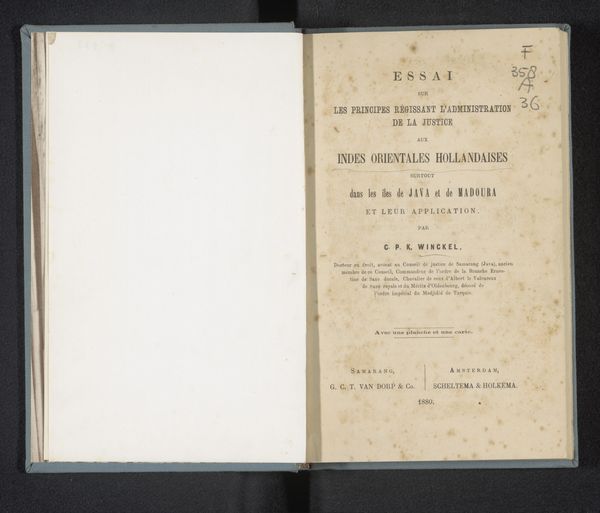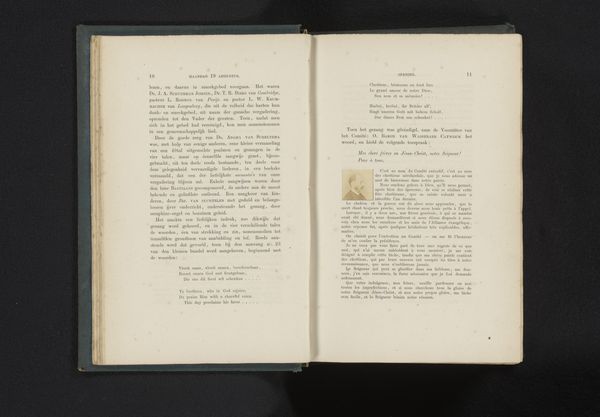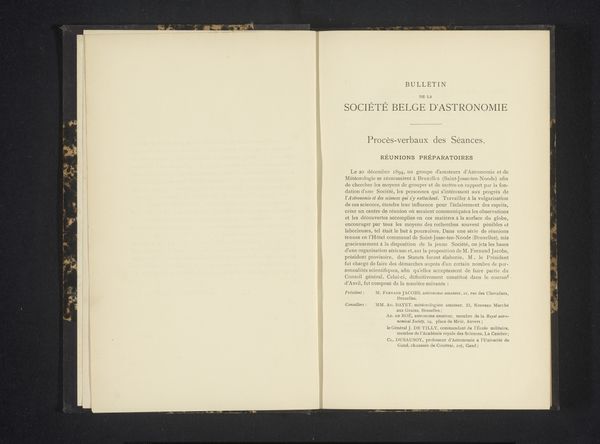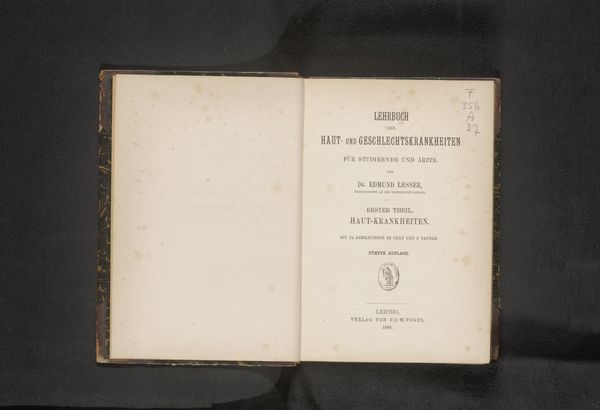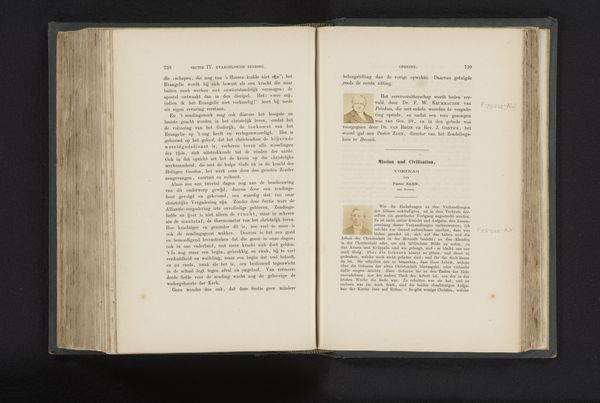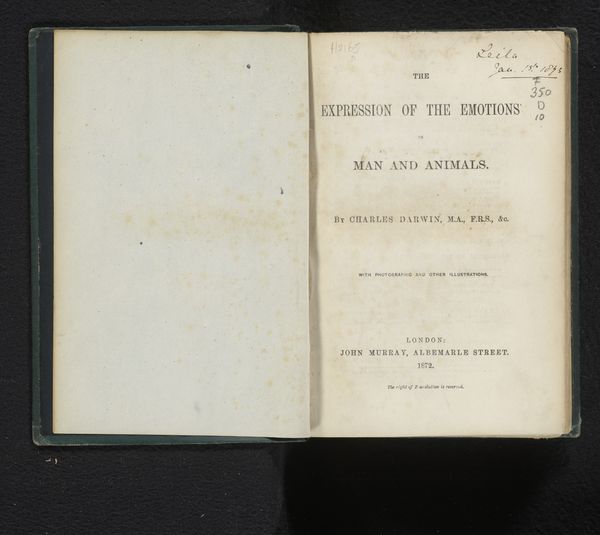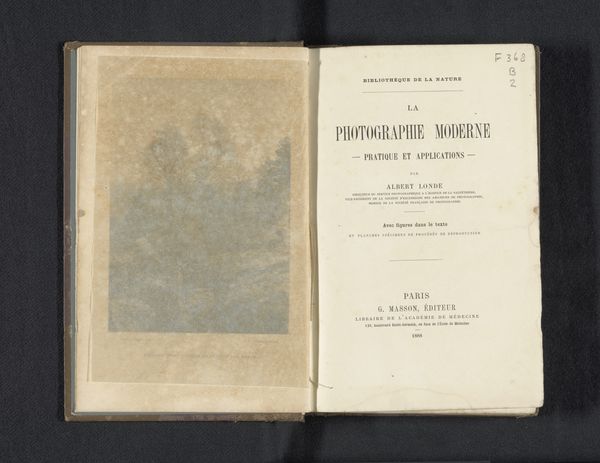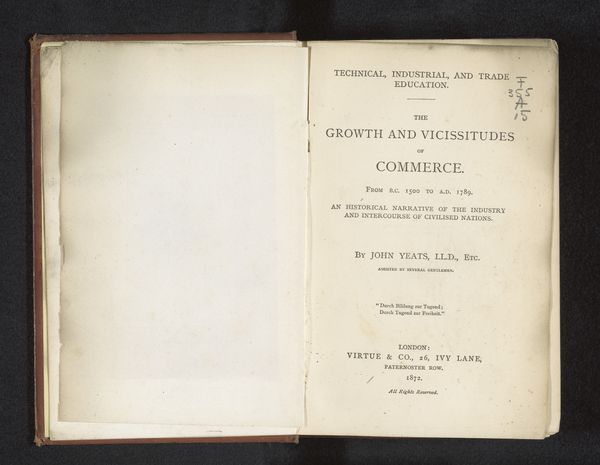
Portraits of men of eminence in literature, science, and art, with biographical memoirs, dl. 2-6 1863 - 1867
0:00
0:00
print, photography, albumen-print
#
portrait
# print
#
photography
#
coloured pencil
#
albumen-print
#
realism
Dimensions: height 230 mm, width 173 mm, thickness 72 mm
Copyright: Rijks Museum: Open Domain
Curator: Here we have a photograph of an open book from the mid-19th century, volumes two through six of "Portraits of Men of Eminence in Literature, Science, and Art, with Biographical Memoirs," edited by Lovell Augustus Reeve. It dates from 1863 to 1867. Editor: Immediately, I’m struck by the melancholic tone. The portrait itself, an albumen print I think, has this faded quality. It speaks to a time of both great aspiration, celebrating achievement, and also quiet reflection. It almost feels elegiac. Curator: These publications were important because they sought to construct a visual and textual canon of Victorian achievement. Note how the project elevates and celebrates figures deemed eminent within a patriarchal structure. The images, carefully selected and displayed, became part of how society defined and reinforced those positions of power and influence. Editor: Absolutely, it begs the question: who is missing? Which voices were deliberately excluded from this portrait of eminence? Looking at this album now, we must ask ourselves what structures and ideologies were upheld through these selective portrayals. Also, I wonder what the distribution looked like - who had access to it and how did that affect perceptions around class? Curator: The choice of photography as a medium is crucial. Its claim to objective realism lends authority to the biographical narratives, positioning these men as figures worthy of admiration and emulation, shaping public opinion in ways that etch themselves into our cultural psyche. Editor: Precisely, it’s crucial we analyze not just *who* is presented, but *how*. The photographic choices—lighting, composition, even the printing process itself—contributes to the creation of an aura, cementing certain people into public life while excluding many others. Curator: And what do you make of the book as an object, how does its form shape its social function? Editor: That its in book form creates an institutional legitimacy to the collection, as if the words alongside the images give them credence, embedding their status within a system that benefits people from particular backgrounds in Britain and further reinforcing ideas of power that serve imperialist efforts at the time. I suppose ultimately these curated visual stories shaped social identities and cultural hierarchies. Curator: Indeed, this artifact reminds us that art always exists within a web of power relations. The portraits presented contribute significantly to this narrative. Editor: Thinking critically about these portraits allows us to acknowledge past exclusions while simultaneously shaping more diverse and representative narratives in the present.
Comments
No comments
Be the first to comment and join the conversation on the ultimate creative platform.



